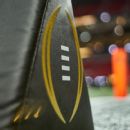-
Posts
945 -
Joined
Content Type
Profiles
Forums
Store
Downloads
Recruiting - 2020
2019-2020 Football Season
Football
Entertainment
Sports
News and Business
Cloak Room
Transfer Portal
Recruiting
Events
Posts posted by orange dream
-
-
Buy small notes from the doorman or bellman at your hotel for a small exchange fee. He should have plenty.
-
 2
2
-
-
TN by 10 mark it down!!
-
 1
1
-
-
1 minute ago, texastroubadour said:
Who the fuck names their kid General?
Someone who doesn’t feel like Major has enough juice
-
 2
2
-
-
15 minutes ago, futureman said:
sorry for machine-gun posts. I listened to this but I was distracted and I can't tell what's going on or if this is a bit? gordo is going to remain on the musers and will join the hang zone once a week? or gordo is leaving the musers and joining the hang zone full-time?
Just joining HZ once a week for a segment called:
C
U
NextTuesday
-
 2
2
-
-
Did you know that Beto doesn't care that Messcin Drug Cartels are sending enough Rainbow Fentanyl to kill every Texan 10 times over?
-
-
The Power of One (only on apple tv from what I can tell but it is worth doing)
Field of Dreams isn't just for baseball people
Stripes
Bad News Bears (original version)
Captain Philips
A Few Good Men
Officer and a Gentlemen
The Pursuit of Happiness
-
3 minutes ago, Fondren & Main said:
So, if we can survive UTSA w/ the RoCat, get Hud back for Tech (which is thankfully not at night), and then Quinn back for the next game things could be looking pretty good. I'd like to fuck OU up this
yearDECADE. They are owed it.fify
ChiTown...

-
 1
1
-
 1
1
-
-
1 hour ago, Huckleberry said:
Waiting for someone to post what the 12 team playoff would have been every year since the BCS started.
Sorry for the longcat but you asked for it... only since 2014 though
College Football Playoff expansion -- 12-team historic simulations, storylines and more (espn.com)
full article in spoiler
SpoilerCollege Football Playoff expansion: 12-team historic simulations, storylines and more
2:11 PM CT-
 Bill ConnellyESPN Staff Writer
Bill ConnellyESPN Staff Writer
To see how a new development might affect the future, take a look at how it would have affected the past. That's a go-to of mine -- see: how larger playoffs would have worked in 2020 or how a much bigger, earlier playoff would have affected things -- and with the long-awaited news that we will be moving toward a 12-team playoff in 2026, we have a reason to dip into that well once more.
I had never really paid much attention to a 12-team format until it arose as an option last summer. An eight-teamer -- six conference champions with two at-large bids -- had long seemed like an inclusive, interesting and logical next step. But as it turns out, a 12-teamer works quite well in terms of political calibration.
A 12-team playoff, with six spots guaranteed for conference champions, not only offers playoff paths to at least one team from the Group of Five conferences; it also assures that as the balance of power shifts within the Power Five -- with the Big Ten and SEC acquiring more and more money and influence at the expense of the Big 12, Pac-12 and ACC -- the winners of each of those conferences will have a place at the table in most seasons. It assures that college football's national title race is actually inclusive for just about the first time ever.
But it also assures that the most powerful conferences and teams benefit massively from extra at-large bids. And the news that quarterfinal games would take place in bowl games (presumably the four New Year's Six bowls that don't host semifinals in a given year) instead of home fields conveniently allows the most influential bowls to remain relevant. We lose home-field atmospheres, but a game like the Rose Bowl, with its influence weakened and wobbly after the Big Ten kneecapped the Pac-12, is still assured a marquee spot in the lineup long-term. (Who knows, maybe it begins to host the Big Ten Championship in the future, too.)
To best learn about what a 12-teamer changes, however, let's hop in the simulation machine.
Below are how each of the past eight College Football Playoffs would have taken shape with 12 teams instead of four. I used the playoff committee's rankings as they existed -- there's a distinct possibility that the committee considers teams differently with a 12-team cutoff instead of four, but we won't know what the changes are for a while. I also worked under the aforementioned assumption that the quarterfinals will take place in four New Year's Six bowls, with the semifinals taking place in the same bowls that hosted the four-team semis. I simulated each playoff using my SP+ rankings, and I'm including each playoff team's odds of reaching the semifinals below, as well as the most likely champions each season. (Why semifinal odds? Because I want to see what might have changed compared to the four-team playoff that we actually got.)
2014
First round
-
9 Ole Miss (9-3) at 8 Michigan State (10-2)
-
12 Boise State (11-2) at 5 Baylor (11-1)
-
11 Kansas State (9-3) at 6 TCU (11-1)
-
10 Arizona (10-3) at 7 Mississippi State (10-2)
Top-ranked snubs: Georgia Tech (10-3), Georgia (9-3)
Quarterfinals
-
Orange Bowl: 1 Alabama (12-1) vs. Michigan State-Ole Miss winner
-
Cotton Bowl: 4 Ohio State (12-1) vs. Baylor-BSU winner
-
Peach Bowl: 3 Florida State (13-0) vs. TCU-KSU winner
-
Fiesta Bowl: 2 Oregon (12-1) vs. Mississippi State-Arizona winner
Semifinal odds, per SP+
-
1 Alabama 75%
-
3 Florida State 66%
-
2 Oregon 60%
-
4 Ohio State 59%
-
7 Mississippi State 37%
-
5 Baylor 37%
-
6 TCU 27%
-
8 Michigan State 18%
-
9 Ole Miss 8%
-
11 Kansas State 7%
-
12 Boise State 4%
-
10 Arizona 3%
Odds of top 4 all advancing: 17%
Most likely champions: Alabama (37%), Florida State (19%), Ohio State (11%)Originally, the big controversy from this season came when Ohio State usurped Baylor and TCU for the No. 4 spot. In this example, the Buckeyes merely steal a bye. Baylor draws a solid but unspectacular Boise State, while TCU hosts a three-loss Kansas State team it beat by three touchdowns earlier that season. They both likely win and advance to intriguing Ohio State-Baylor and FSU-TCU quarterfinals.
2015
First round
-
9 Florida State (10-2) at 8 Notre Dame (10-2)
-
12 Houston (12-1) at 5 Iowa (12-1)
-
11 TCU (10-2) at 6 Stanford (11-2)
-
10 North Carolina (11-2) at 7 Ohio State (11-1)
Top-ranked snubs: Ole Miss (9-3), Northwestern (10-2)
Quarterfinals
-
Peach Bowl: 1 Clemson (13-0) vs. Notre Dame-FSU winner
-
Rose Bowl: 4 Oklahoma (11-1) vs. Iowa-Houston winner
-
Fiesta Bowl: 3 Michigan State (12-1) vs. Stanford-TCU winner
-
Sugar Bowl: 2 Alabama (12-1) vs. Ohio State-UNC winner
Semifinal odds, per SP+
-
4 Oklahoma 80%
-
2 Alabama 54%
-
1 Clemson 53%
-
6 Stanford 42%
-
7 Ohio State 39%
-
3 Michigan State 37%
-
8 Notre Dame 26%
-
9 Florida State 22%
-
11 TCU 21%
-
5 Iowa 14%
-
10 North Carolina 8%
-
12 Houston 7%
Odds of top 4 all advancing: 9%
Most likely champions: Alabama (25%), Ohio State (18%), Oklahoma (16%)This draw gives out two consequential mulligans. The first one goes to Ohio State, which was quite possibly deeper and more talented than 2014's title team but slogged through a miserable 17-14 defeat to Michigan State. Instead of costing the Buckeyes a bid, it costs them a bye, and they likely beat UNC and get a shot at a flawed Bama in the quarterfinals.
The second mulligan goes to a Stanford team that began the season with the infamous "body clocks" loss to Northwestern before catching fire. In this reality, it gets the 6-seed and has an excellent chance of getting through TCU and Michigan State and into the semifinals.
2016
First round
-
9 USC (9-3) at 8 Wisconsin (10-3)
-
12 Western Michigan (13-0) at 5 Ohio State (11-1)
-
11 Florida State (9-3) at 6 Michigan (10-2)
-
10 Colorado (10-3) at 7 Oklahoma (10-2)
Top-ranked snubs: Oklahoma State (9-3), Louisville (9-3)
Quarterfinals
-
Sugar Bowl: 1 Alabama (13-0) vs. Wisconsin-USC winner
-
Cotton Bowl: 4 Penn State (11-2) vs. Ohio State-WMU winner
-
Rose Bowl: 3 Washington (12-1) vs. Michigan-FSU winner
-
Orange Bowl: 2 Clemson (12-1) vs. Oklahoma-Colorado winner
Semifinal odds, per SP+
-
1 Alabama 74%
-
2 Clemson 59%
-
3 Washington 56%
-
4 Penn State 47%
-
5 Ohio State 45%
-
7 Oklahoma 40%
-
6 Michigan 25%
-
11 Florida State 19%
-
9 USC 19%
-
12 WMU 8%
-
8 Wisconsin 7%
-
10 Colorado 1%
Odds of top 4 all advancing: 11%
Most likely champions: Alabama (34%), Clemson (19%), Washington (13%)Ohio State, which earned the No. 3 seed in real life, draws the No. 5 only because it didn't win the Big Ten. Instead, Penn State -- which beat the Buckeyes in the regular season but lost twice -- gets a bye ... and probably plays Ohio State again in the Cotton Bowl quarterfinals.
Note the chaos potential of the odds above, by the way. Six teams have between a 40-59% chance of reaching the final four, and there's only an 11% chance of the top four seeds getting there.
2017
First round
-
9 Penn State (10-2) at 8 USC (11-2)
-
12 UCF (12-0) at 5 Alabama (11-1)
-
11 Washington (10-2) at 6 Wisconsin (12-1)
-
10 Miami (10-2) at 7 Auburn (10-3)
Top-ranked snubs: Stanford (9-4), Notre Dame (9-3)
Quarterfinals
-
Peach Bowl: 1 Clemson vs. USC-PSU winner
-
Fiesta Bowl: 4 Ohio State vs. Alabama-UCF winner
-
Orange Bowl: 3 Georgia vs. Wisconsin-Washington winner
-
Cotton Bowl: 2 Oklahoma vs. Auburn-Miami winner
Semifinal odds, per SP+
-
1 Clemson 58%
-
2 Oklahoma 56%
-
3 Georgia 54%
-
5 Alabama 51%
-
4 Ohio State 48%
-
7 Auburn 34%
-
6 Wisconsin 33%
-
9 Penn State 30%
-
11 Washington 14%
-
8 USC 12%
-
10 Miami 9%
-
12 UCF 2%
Odds of top 4 all advancing: 9%
Most likely champions: Alabama (23%), Ohio State (18%), Georgia (12%)Maximum chaos potential. Alabama's late-year loss to Auburn knocked the Crimson Tide from the SEC championship game, but when Georgia defeated Auburn in Atlanta, Bama sneaked into the four-team playoff and then won the whole thing. The Tide obviously get in here, too, but as the No. 5 seed. And with no true standout teams, eight teams have at least a 30% chance of reaching the semis and all are under 60%.
Also: Self-proclaimed national champion UCF no longer complains about getting left out of the Playoff. Instead ... it has to beat Bama and Ohio State to get to the semis. Ouch.
2018
First round
-
9 Washington (10-3) at 8 UCF (12-0)
-
12 Penn State (9-3) at 5 Notre Dame (12-0)
-
11 LSU (9-3) at 6 Georgia (11-2)
-
10 Florida (9-3) at 7 Michigan (10-2)
Top-ranked snubs: Washington State (10-2), Kentucky (9-3)
Quarterfinals
-
Peach Bowl: 1 Alabama (13-0) vs. UCF-Washington winner
-
Rose Bowl: 4 Ohio State (12-1) vs. Notre Dame-PSU winner
-
Fiesta Bowl: 3 Oklahoma (12-1) vs. Georgia-LSU winner
-
Sugar Bowl: 2 Clemson (13-0) vs. Michigan-Florida winner
Semifinal odds, per SP+
-
1 Alabama 85%
-
2 Clemson 66%
-
4 Ohio State 59%
-
6 Georgia 50%
-
3 Oklahoma 38%
-
5 Notre Dame 25%
-
7 Michigan 17%
-
10 Florida 16%
-
12 Penn State 16%
-
11 LSU 13%
-
9 Washington 9%
-
8 UCF 6%
Odds of top 4 all advancing: 13%
Most likely champions: Alabama (45%), Georgia (17%), Clemson (16%)Beginning in 2018, the teams at the top of the pack began to get more dominant. This was Nick Saban's best Bama team to date, and Clemson was playing otherworldly ball at the end of the season. They stand out as favorites, and while the other two quarterfinals could be competitive, the chaos potential is minimized this year.
Two other notes:
UCF becomes the first Group of 5 team to host a first-round game, but even if the Knights win ... they get Bama again in the next round. Double ouch.
Unbeaten Notre Dame draws only the No. 5 seed because the Irish aren't conference champions. Their odds of reaching the semifinals are far lower than those of the top four seeds, but as athletic director Jack Swarbrick pointed out recently, they would have to play a conference title game to earn one of those top four seeds. That brings obvious risk as well.
2019
First round
-
9 Florida (10-2) at 8 Wisconsin (10-3)
-
12 Memphis (12-1) at 5 Georgia (11-2)
-
11 Utah (11-2) at 6 Oregon (11-2)
-
10 Penn State (10-2) at 7 Baylor (11-2)
Top-ranked snubs: Auburn (9-3), Alabama (10-2)
Quarterfinals
-
Sugar Bowl: 1 LSU (13-0) vs. Wisconsin-Florida winner
-
Cotton Bowl: 4 Oklahoma (12-1) vs. Georgia-Memphis winner
-
Orange Bowl: 3 Clemson (13-0) vs. Oregon-Utah winner
-
Rose Bowl: 2 Ohio State (13-0) vs. Baylor-PSU winner
Semifinal odds, per SP+
-
2 Ohio State 78%
-
1 LSU 74%
-
3 Clemson 70%
-
4 Oklahoma 46%
-
5 Georgia 44%
-
6 Oregon 16%
-
9 Florida 15%
-
10 Penn State 15%
-
11 Utah 14%
-
8 Wisconsin 11%
-
12 Memphis 10%
-
7 Baylor 7%
Odds of top 4 all advancing: 19%
Most likely champions: Ohio State (36%), LSU (28%), Clemson (14%)There is great potential for a new crop of rivalry games in a 12-team era. With a possible Oklahoma-Georgia Cotton Bowl matchup, this might have been the third consecutive year that saw the Sooners and Dawgs face off, after the 2017 semis and 2018 quarterfinals. Meanwhile, Alabama and Ohio State might have played each other five years in a row -- the 2014 quarterfinals, 2015 semis, 2016 semis, 2017 quarters and 2018 semis. Yes, we probably still get our fair share of Bama-Clemson battles, but that isn't the only defining matchup.
Also: Using the CFP rankings as they were originally drawn up, a two-loss Alabama team gets left out of these playoffs in favor of Utah and Penn State. I'm going to go out on a limb and guess the committee doesn't rank the Tide 13th if 12 is the new cutoff.
2020
First round
-
9 Georgia (7-2) at 8 Cincinnati (9-0)
-
12 Coastal Carolina (11-0) at 5 Notre Dame (10-1)
-
11 Indiana (6-1) at 6 Texas A&M (8-1)
-
10 Iowa State (8-3) at 7 Florida (8-3)
Top-ranked snubs: North Carolina (8-3), Northwestern (6-2)
Quarterfinals
-
Peach Bowl: 1 Alabama (11-0) vs. Cincinnati-Georgia winner
-
Fiesta Bowl: 4 Oklahoma (8-2) vs. Notre Dame-Coastal winner
-
Cotton Bowl: 3 Ohio State (6-0) vs. A&M-Indiana winner
-
Orange Bowl: 2 Clemson (10-1) vs. Florida-ISU winner
Semifinal odds, per SP+
-
1 Alabama 78%
-
4 Oklahoma 74%
-
3 Ohio State 73%
-
2 Clemson 61%
-
7 Florida 29%
-
6 Texas A&M 23%
-
5 Notre Dame 18%
-
9 Georgia 14%
-
10 Iowa State 10%
-
8 Cincinnati 9%
-
12 Coastal Carolina 8%
-
11 Indiana 5%
Odds of top 4 all advancing: 25%
Most likely champions: Alabama (42%), Ohio State (18%), Clemson (14%)The "top six conference champions" rule wreaks havoc in 2020. With unranked Oregon beating USC, that means conference champion No. 6 is now the Sun Belt's Coastal Carolina. Meanwhile, Oklahoma's Big 12 title game win over Iowa State gives the Sooners a bye and sends the Cyclones to Gainesville for Round 1. That's all undercard, however. The top four teams are the most dominant set of four yet, though Clemson gets a tricky draw in potentially facing a Florida team that doesn't have Kyle Pitts et al opting out in the quarterfinals.
And yes, Alabama likely still wins it all.
2021
First round
-
9 Oklahoma State (11-2) at 8 Ole Miss (10-2)
-
12 Pittsburgh (11-2) at 5 Georgia (13-0)
-
11 Utah (10-3) at 6 Notre Dame (11-1)
-
10 Michigan State (10-2) at 7 Ohio State (10-2)
Top-ranked snubs: BYU (10-2), Oregon (10-3)
Quarterfinals
-
Sugar Bowl: 1 Alabama (12-1) vs. Ole Miss-Oklahoma State winner
-
Cotton Bowl: 4 Baylor (11-2) vs. Georgia-Pitt winner
-
Rose Bowl: 2 Michigan (12-1) vs. Ohio State-Michigan State winner
-
Orange Bowl: 3 Cincinnati (13-0) vs. Notre Dame-Utah winner
Semifinal odds, per SP+
-
1 Alabama 72%
-
5 Georgia 70%
-
3 Cincinnati 61%
-
7 Ohio State 56%
-
2 Michigan 41%
-
6 Notre Dame 25%
-
4 Baylor 21%
-
9 Oklahoma State 15%
-
11 Utah 15%
-
8 Ole Miss 13%
-
12 Pitt 9%
-
10 Michigan State 3%
Odds of top 4 all advancing: 4%
Most likely champions: Georgia (32%), Ohio State (22%), Alabama (18%)Wow, has a lot changed with this one. In reality, we had Michigan winning the Big Ten and keeping Ohio State out of the CFP, then we got a Bama-Georgia final. In this alternate reality, Michigan makes its third CFP and ends up getting a bye in what amounts to a Big Ten regional and facing the winner of Ohio State-Michigan State (probably the Buckeyes) in a Rose Bowl semifinal. Meanwhile, perhaps even more consequentially, Georgia doesn't get a top-four seed (conference champs only) and likely ends up facing Alabama in the semifinals. That drastically reduces both teams' title odds and offers Ohio State a lifeline for avenging the Michigan loss and making a playoff run.
Here are some thoughts about what these simulations tell us.
This is a massive change
In the first eight years of the four-team playoff, only two teams that ended up ranked worse than 10th in SP+ made the field -- one of those two, 2020 Notre Dame, fell out of the top 10 only after playing in the CFP -- and 25 of 32 teams finished the year in the top five. This club was too exclusive and hasn't really benefited college football in terms of inclusiveness.
We're extremely inclusive now.
EDITOR'S PICKS
-

CFP board decides on 12-team playoff format
16mHeather Dinich and Pete Thamel
Again, it's conceivable that the thought processes behind how the committee ranks teams will change. But based solely on the 2014-20 rankings that already exist, a 12-team field would have brought in 10 teams that ranked worse than 20th in SP+. And although that group does include five of the obligatory Group of 5 teams -- or, as we'll evidently now refer to them, "sixth conference champions" -- it also includes a 2016 Colorado team that finished the year 53rd and a 2014 Arizona team that finished 46th.
This is a true tournament now, for better or worse, and quite a bit of the FBS will get to experience it. In this eight-year simulation, 41 teams -- about 32% of FBS' membership -- reach at least one playoff.
Simulated CFP appearances by team
8: Ohio State
7: Alabama
6: Clemson, Oklahoma
5: Georgia
4: Notre Dame, Penn State
3: Baylor, Florida, Florida State, Michigan, Michigan State, Washington, Wisconsin
2: Cincinnati, LSU, Ole Miss, Oregon, TCU, UCF, USC, Utah
1: Arizona, Auburn, Boise State, Coastal Carolina, Colorado, Houston, Indiana, Iowa, Iowa State, Kansas State, Memphis, Miami, Mississippi State, North Carolina, Oklahoma State, Pittsburgh, Stanford, Texas A&M, Western MichiganTo be sure, this structure still benefits the top dogs most of all. Ohio State now reaches the CFP in every single season, Clemson and Oklahoma rip off streaks of six straight playoffs from 2015-20, and although Alabama misses the 2019 CFP based on the committee's original rankings, again, I doubt that happens if there's a 12-team cutoff.
At the same time, teams like Penn State, Washington and Wisconsin each make half or nearly half of the playoffs and have decent odds of doing damage when they get there, and a conference that doesn't have a clear dominant force at the moment -- the Pac-12 -- sees more than half its membership make at least one appearance.
Simulated CFP appearances by conference
Big Ten: 23
SEC: 22
Big 12: 14
ACC: 13* (including Notre Dame's 2020 appearance)
Pac-12: 12
AAC: 6
Independents: 3 (all Notre Dame)
MAC: 1
MWC: 1
Sun Belt: 1
Conference USA: 0Again, the top dogs benefit the most. While expansion to 12 teams finally offers genuine inclusion to all of the FBS, it also means that an average of 5.6 SEC and Big Ten teams make the playoff field each year. If revenue ends up distributed by the number of playoff teams your conference has, the richest conferences continue to expand their lead on the field.
The favorites remain the favorites, but the shifting odds are noteworthy
In a 12-team tournament, you're introducing genuine randomness to the proceedings. Using the SP+ projections above, here are the average odds of reaching the semifinals for each seed, 1-12:
1-seed: 71%
2-seed: 60%
3-seed: 57%
4-seed: 54%
5-seed: 38%
6-seed: 30%
7-seed: 32%
8-seed: 13%
9-seed: 16%
10-seed: 8%
11-seed: 13%
12-seed: 8%There's some noise in there, but you see a clear hierarchy, and to be sure, the top four seeds have the best odds of reaching the semis, as you would expect. But those odds aren't anywhere near 100%. Even in 2019-20, when the balance of power coagulated significantly at the top, teams such as 2019 LSU and 2020 Alabama had semifinal odds only in the 70-80% range. They still have to beat one extra very good team to get there, and the more good teams you play, the more tempted fate might be to throw you a curveball.
Are conference title games pointless now?
One of the immediate concerns expressed in the aftermath of the original 12-team rumor was that you're basically rendering the conference championship game pointless. Both teams are still going to make the field, right?
Not necessarily. In this simulation, only 18 of 37 power conference title-game losers made it -- and even in the SEC and Big Ten, the runners-up made it only nine of 16 times.
A lot of this, of course, is the product of a bad divisional structure. The SEC championship game losers that didn't make it, for instance, were the flawed Missouri and Florida teams that won the SEC East from 2014 to 2016. If or when conferences move to ditch divisions (and the Pac-12 already has), (A) it would greatly increase the odds that the conference's best teams have a chance at the conference title, which I've always considered an obviously good thing, but (B) it would indeed lessen the importance of the conference title game in a universe with a 12-team playoff. The winner still gets a valuable bye, but the stakes aren't quite as high.
Yes, we could have a three-loss national champion now
But it's unlikely.
When the subject of playoff expansion comes up, those opposed to the idea are all but guaranteed to bring up something to the effect of "Now some 9-3 team could win the national title! The sanctity of the regular season is dead!" There's no denying that in a 12-team playoff era, we'd be handing out a lot more mulligans.
In the eight years above, 16 three-loss teams make the field of 12, about two per year. We could now have a national champion with some wacky, NFL-like 14-3 record. But within that three-loss group, only 2017 Auburn (34%) and 2020 Florida (29%) end up with a greater than 20% chance of reaching even the semifinals, and almost none would have odds higher than about 3-4% of winning the title. A Cinderella run of sorts would be possible but extremely unlikely. As is the case in every college sport.
The Auburn conundrum
In an average season, Auburn plays in the nation's best division (the SEC West), draws permanent rival Georgia in cross-division play, and schedules at least one extremely high-quality nonconference opponent each year: Oregon in 2019, Washington in 2018, Clemson in 2017, etc.
The reward for that high-level scheduling: one CFP bid in eight years, per the simulation above. The Tigers made it with three losses in 2017 and narrowly missed out in 2019. The rankings above basically make it so that any power-conference team is guaranteed to make the field with one loss and has excellent odds with two losses. If we see a change in how the committee ranks teams moving forward -- there's no guarantee we will, but there's obviously a chance -- it could be in terms of how much teams are forgiven for quality losses.
A changing opt-out universe
When Florida played Oklahoma in the Cotton Bowl at the end of 2020, the Gators did so without all-world tight end Kyle Pitts, receivers Kadarius Toney and Trevon Grimes, and defensive back Marco Wilson -- four of probably their five or six best players. They had all opted out to begin preparation for the NFL draft. When Pitt won the ACC in 2021, the Panthers played in the Fiesta Bowl without star quarterback Kenny Pickett. They almost certainly don't opt out in a universe with a 12-team playoff.
To the extent that the goal of playoff expansion is to simply create as many meaningful games and as much entertaining content as possible, then throwing a big party is a pretty effective way of making sure as many teams as possible remain engaged in the season for as long as possible. You can find quite a few coaches pushing for an even bigger playoff in private, and that is part of why. (Well, that and their agents being able to say "He has made the playoff X consecutive years!" to their employers.)
This is undeniably a good thing from a consumption standpoint. Hopefully it's a good thing for the athletes themselves, too.
-
-

try to avoid the dysentery
-
 1
1
-
-

Nothing in this pic is moving
-
 1
1
-
 1
1
-
-
Love the thread. Whether we agree or not, I don't really see the choice any of us have but to hope that this stuff is true and that somehow Sark can put it together.
-
 4
4
-
 1
1
-
-
4th Texas Cares draw last Friday (7/29/2022) S>2500 N=185.0
This is my history...
Had a mild case of Covid in October 2020
Pfizer/Pfizer back in Feb/March 2021
Texas CARES in early Sept 2021 S>2500 N=51
Texas CARES in early December 2021 S=1615 N=31
Boosted Moderna mid-December 2021
3rd Texas Cares draw on (3/30/2022) S>2500 N=196.0
Jump in my N-antibodies between 2nd and 3rd draw must mean I had Covid sometime between my early December 2021 blood draw and March 2022.
Late Feb-Mid March 2022 I was fighting an upper respiratory infection, sore throat, pink eye, hacking cough. I took two covid tests (both negative) and flu and a strep test (all negative). Symptoms finally cleared with steroid dosepack and 10 days of antibiotics.
That had to have been it despite the 2 negative tests.
Antibodies (both types) are still rocking along. Doesn't seem like an additional boost would do much for me, at least until the "updated" version comes out.
-
 2
2
-
-
12 hours ago, Porterhouse said:
Lambos aren’t good looking cars. Would not bang. Now Ferraris….I’d buy one if I had the means. I’d probably be more focused on getting out of fucking Frisco first.

-
39 minutes ago, NOMAAA said:
hank were you just on the hang zone?
What happened?
-
DO NOT FORGET THE SHIT STICK
For real though, good luck and hopefully the worst won't occur.
-
 2
2
-
 2
2
-
-
First shot definitely appears to have either missed or been a misfire of some sort. I don't see how no one else (security, etc.) was hurt who was standing between him and the gunman. Shot gun blasts typically not that precise.
RIP Abe
-
hope things turn out better than expected.
-
I told my wife the news and she said, "where QBs go to die"
my response:

but also a little this...

-
 1
1
-
 1
1
-
 2
2
-
-
We have a now almost 20 year old son with a late July birthday so most of what I reference is from research done almost 15 years ago. At the time probably 25%-33% of June or later birthdays delayed the start of kindergarten. Breaking it down further, boys from middle class and up families it was something like 70%+ delayed kindergarten start. Girls and less affluent boys and girls the numbers were in the low teens or even single digits.
We had our son do kindergarten at a church school and then do kindergarten again at the local school so he wasn't just repeating exactly what he did the year before.
He had a great overall academic and athletic experience through school. Chances are he would also have done fine had he not "redshirted" but we remain happy with our choice.
We also have a current 9 year old son with an end of April birthday. We did not delay his start to school (mainly because we are now old AF). He is doing fine overall but he is definitely less mature than a lot of his peers. Looking around he is the second youngest kid (boys and girls) in his grade at school which tells me that the statistics of how popular "redishirting" is, at a minimum, holding steady, if not increasing. He has a couple of boys in his grade who are more than a year older than him.
Tons of variables obviously but it is pretty common, especially for Summer birthday boys.
-
-
1 minute ago, The_Great_Hornsby said:
Would be nice if we were competitive in any of the three major sports
Dude, we ARE in the CWS for the 2nd straight year. Sucks we’re losing to the ags but c’mon man!!
no argument on football tho
-
I have a co-worker who relocated from Canada. He is a US citizen but his wife and kids were not. Once they moved to the US in 2019 they began the process of applying for green cards for wife and kids. Also applied for SSN's for wife and kids through the same process with the immigration lawyer they were using. Due to general government delays and COVID, the SSNs were not issued until 2021.
He filed his 2020 taxes claiming his kids as dependents at the extended deadline in 2021 after he had received the SSNs. Additionally he amended his 2019 return to include his kids as dependents under their newly issued SSNs.
Yesterday he received a letter from the IRS stating that they were denying the "dependent" status for 2020 because the SSNs were not issued until 2021. Presumably he will get a similar letter soon regarding his amended 2019 return on which he also claimed his kids as dependents. His immigration lawyer isn't offering any advice or assistance.
Seems like there should be some vehicle to allow for the dependent election as long as it (SSN) has been applied for but I don't know. Does anyone have any experience with something like this or a referral to someone (CPA,etc.) that he should talk to?
-
Yes, this may make an already hard to manage pitching day even more interesting.












Who is next?
in Football
Posted
Prolly talking out my ass here but this game has the potential to be the 2004 12-0 loss to ou.
We were all sick to death and thought the run was over. The next year VY became himself…
whoever said above, if our receivers catch the ball we win the game. Also if Ewers sees Bijan on the wheel we win. Not to mention don’t be stupid in rushing the punter. Very disappointed, but starting over right now feels like giving up on the next 3 years already. I’m sick of this!!